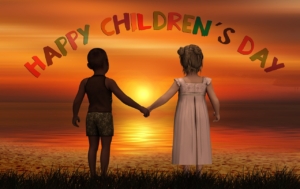NTERNATIONAL CHILDREN’S DAY – June 1, Today
 NTERNATIONAL CHILDREN’S DAY – June 1, Today
NTERNATIONAL CHILDREN’S DAY – June 1, Today
International Children’s Day is celebrated annually on June 1 in different parts of the world as an initiative for children’s well-being and rights.
Dramatic progress has been made in reducing the number of children born with HIV. Building on the success of the Global Plan towards the elimination of new HIV infections among children by 2015 and keeping their mothers alive, a commitment to accelerate progress towards ending paediatric AIDS was adopted in the Political Declaration on Ending AIDS, adopted by United Nations Member States in June 2016. The Start Free Stay Free AIDS Free framework is based on achieving ambitious new targets for 2018 and 2020, embracing a life-cycle approach towards achieving an AIDS-free generation, with a focus on the first 0–24 years of age.
https://www.unaids.org/en/topic/children
Start Free: the risk of a woman living with HIV passing the virus on to her child can be reduced to 5% or less with effective antiretroviral therapy during pregnancy, delivery and breastfeeding. Primary prevention of new HIV infections among women of childbearing age, coupled with early access to prenatal care and HIV testing, are key to this strategy, with women living with HIV also encouraged to remain on treatment for life for their own health. Early infant diagnosis is essential to identify the HIV status of infants and to improve prevention and treatment interventions, as peak mortality occurs between six weeks to four months of age for children who have acquired HIV infection. New point of care technologies and linkages to care and treatment have shown promising results, with same-day turnaround of results to caregivers and improved rates of linkage to and retention in care as needed.
Stay Free: the period of adolescence into early adulthood is a time of transition associated with complex physical, emotional and cognitive changes, and greater peer influence in decision-making. A supportive social environment that enables adolescents to have access to information on sexual and reproductive health, to remain in school and gain life skills to prepare them for economic independence all contribute to enabling young people to remain HIV-negative. Girls and young women under the age of 24 years have significantly higher rates of HIV infection than boys and young men of the same age in sub-Saharan Africa, reflecting social determinants that increase their vulnerability to acquiring HIV. The age of consent and other factors constrain access by adolescents to HIV testing in many countries. Access to adolescent-friendly services where information about prevention and health concerns can be provided are valuable in reaching young people and ensuring they have the tools and information they need to remain HIV-free.
AIDS Free: globally, the coverage of children and adolescents with life-saving antiretroviral treatment lags behind that of adults. Children can grow up and achieve a normal lifespan with effective treatment. Case-finding of children who have been exposed to HIV is critical, and strategies to advance this include early testing during immunization visits, encouraging adult family members to bring their children for testing and provider-initiated testing at clinics and hospitals where children are seen for illnesses or poor nutrition. Providing access to adolescent-friendly services for both testing and treatment is also critical, with social support to address difficult issues of disclosure and peer pressure and information to help them make informed decisions about their care. Adolescence is the only age group in which AIDS-related deaths are increasing. Accelerating development of better and more tolerable age-appropriate paediatric formulations of antiretroviral medicines is a high priority.
